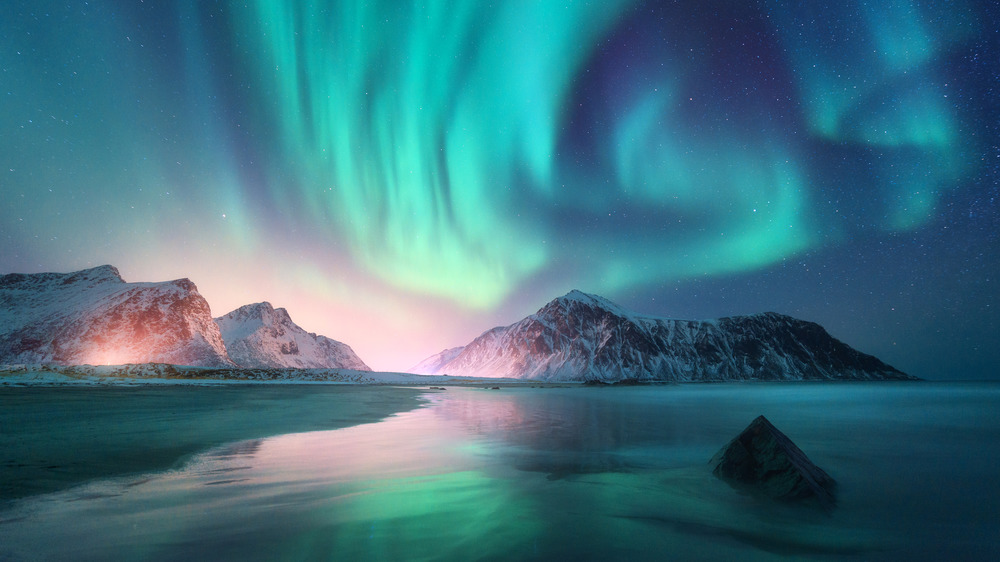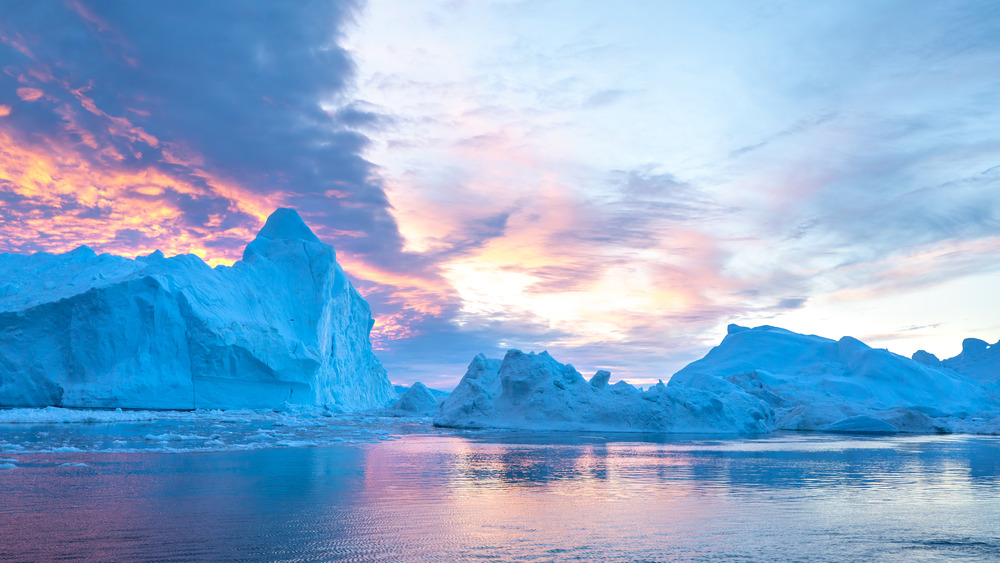Why It's Tricky To Define Day And Night At The North Pole
The common belief regarding day and night at the (very cold) North Pole is that the region gets six months of daylight and six months of darkness, but like a lot of common beliefs, that's not an exact representation of the way it really works.
Per LiveScience, "night" is often inaccurately defined as any time the sun is below the horizon, but this entirely leaves out twilight, in which some amount of illumination is present "whenever the sun's upper rim is less than 18-degrees below the horizon." This describes astronomical twilight, but there are two other additional types of twilight as well.
Civil, or bright, twilight makes it possible for outdoor daytime activities to continue. It's generally bright enough so that car drivers don't need to turn on their headlights, and is present when the sun is fewer than six degrees below the horizon. The sun may disappear from view at the North Pole starting on September 25, but that doesn't mean that total darkness sets in. Civil twilight lasts until October 8.
Not quite as dark as you thought
The other type of twilight is nautical twilight, which is present until the sun drops to 12 degrees below the horizon. At that point it becomes hard to make out the sea horizon where the sea and sky appear to meet. According to LiveScience, the disappearance of nautical twilight is when most people consider the night to have begun; at the North Pole, it ends on October 25. The aforementioned astronomical twilight lasts at the North Pole until November 13. At that point, the sky is completely dark and stays that way until January 25, at which point the cycles of the twilights begin again.
All told, the North Pole experiences 11 weeks of complete darkness 24 hours a day, not six months. Of course, as if it wasn't confusing enough to navigate the true nature of day and night at the North Pole, it turns out time itself is a pretty flexible concept there.
As reported by Scientific American, 24 time zones collide at the North Pole, making it simultaneously 24 different times, as well as no time at all. Sea captains can choose their own time according to the time zones of bordering countries, or just base it on ship activities. For a lot of people, time has lost a lot of its meaning in 2020; at the North Pole, it never had any meaning to begin with.

